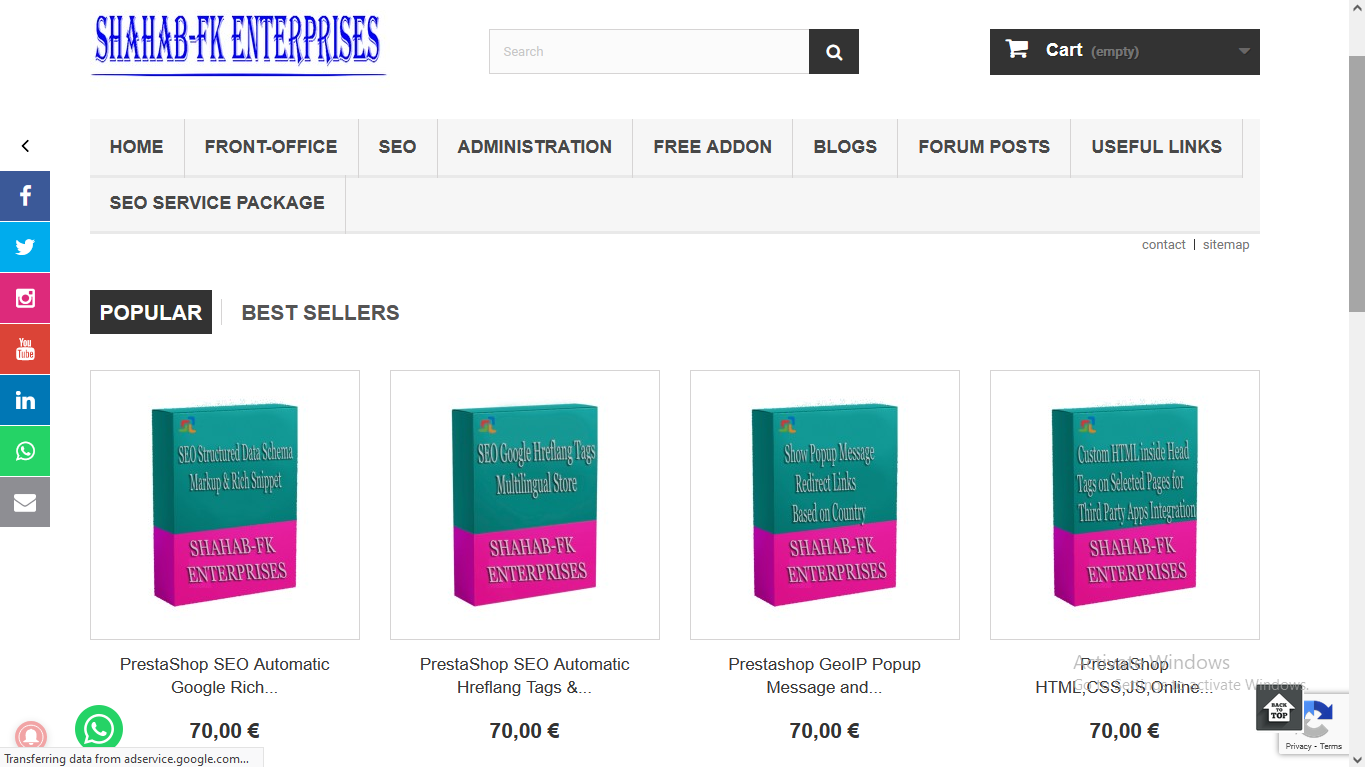Indexing your PrestaShop store’s pages on Google is essential for ensuring that your online store appears in search engine results. To get your PrestaShop store indexed by Google, follow these steps:
- Create a Sitemap:
- Generate a sitemap for your PrestaShop store. A sitemap is an XML file that lists all the URLs on your website, helping search engines discover and index your pages more efficiently.
- PrestaShop often includes a built-in feature to generate a sitemap. You can typically find it in the “SEO & URLs” section of your PrestaShop back office. Make sure it’s enabled and up to date.
- Submit Your Sitemap to Google:
- Sign in to your Google Search Console account (formerly known as Google Webmaster Tools). If you don’t have an account, you’ll need to create one.
- Add your PrestaShop store as a property in Google Search Console. You’ll need to verify ownership, usually by adding a specific HTML tag or uploading a verification file to your site.
- Once your property is verified, go to the “Sitemaps” section and submit the URL of your sitemap (e.g.,
https://www.yourstore.com/sitemap.xml). Google will then periodically crawl and index the pages listed in your sitemap.
- Ensure Your Robots.txt File Allows Crawling:
- Your PrestaShop store’s
robots.txtfile should not block search engine crawlers. Make sure it allows user agents like Googlebot to access your site. - You can often find and modify the
robots.txtfile in the root directory of your PrestaShop installation. Keep it open for indexing by search engines.
- Your PrestaShop store’s
- Use Clean URLs and SEO-Friendly Permalinks:
- Ensure that your PrestaShop URLs are clean and include relevant keywords. You can configure URL settings in the “SEO & URLs” section of the PrestaShop back office.
- Optimize Metadata and Content:
- Optimize your product descriptions, category descriptions, and other content for SEO. Use relevant keywords, meta titles, and meta descriptions.
- Make sure your images have alt tags and that your content is well-structured and valuable to users.
- Promote Your Website:
- Share your PrestaShop store on social media and other online platforms to attract visitors and increase the likelihood of search engine discovery.
- Monitor and Analyze:
- Regularly check Google Search Console for any indexing issues or errors. Address them promptly to ensure smooth indexing.
- Be Patient:
- Indexing can take some time, especially for new websites. Google’s bots need to discover, crawl, and index your pages. Keep providing high-quality content and optimizing your store for search engines.
Remember that Google’s indexing process may take some time, and there are no guarantees of immediate results. However, by following best SEO practices and consistently maintaining your PrestaShop store, you can increase the chances of your pages being indexed and ranked in search results.

